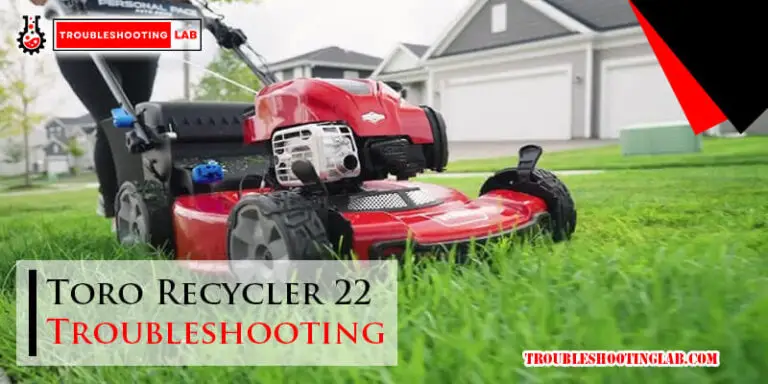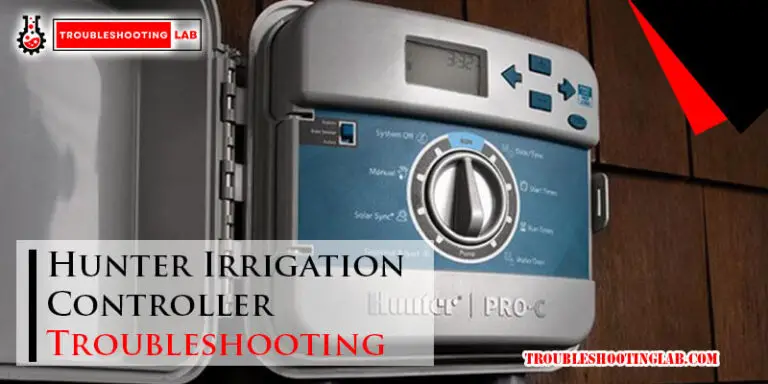Ryobi Power Washer Troubleshooting: Quick Fixes & Tips
Imagine this: it’s a sunny weekend, and you’re ready to tackle the grime that’s taken over your driveway or patio. You roll out your trusted Ryobi power washer, expecting it to blast away dirt in seconds.
But, instead of a powerful jet stream, you’re met with sputtering or, worse, silence. Frustrating, right? This is a scenario that many Ryobi power washer owners face at some point. You’re not alone, and the solution might be simpler than you think.
You’ll find straightforward troubleshooting tips designed to get your Ryobi power washer back in action. Whether it’s a minor hiccup or a more stubborn issue, understanding the common problems and their fixes can save you time and hassle. We’ll walk you through the steps, ensuring you feel confident in diagnosing and repairing your machine. So, let’s dive in and turn your power washer woes into a smooth, efficient cleaning experience. Don’t let a minor setback keep you from achieving that spotless finish you desire!
Common Power Washer Issues
Ryobi power washers are reliable tools for cleaning tasks. Yet, users sometimes face common issues. Addressing these can save time and effort. Let’s explore some frequent power washer problems and their solutions.
No Power Or Won’t Start
Your Ryobi power washer might not start due to several reasons. Check if it’s plugged in properly. Ensure the outlet is working by testing it with another device. Inspect the power cord for any visible damage. A tripped breaker or blown fuse can also be the culprit. Reset the breaker or replace the fuse if needed. Lastly, ensure the power switch is in the ‘on’ position.
Low Pressure Output
Low pressure can hamper your cleaning tasks. Start by checking the water supply. Ensure the hose is not kinked or blocked. Clean or replace the nozzle if it’s clogged. Inspect the inlet filter for debris. A dirty filter can reduce pressure significantly. Verify if the pressure setting is correct on the washer.
Water Leaks
Water leaks can cause inefficiency. Examine hoses and connections for cracks or loose fittings. Tighten any loose connections you find. Replace worn-out hoses to prevent leaks. Check the pump for any visible damage or seals that need replacing. A damaged seal can lead to unwanted leaks.
Overheating Problems
Overheating can stop your power washer from functioning. Ensure the washer has proper ventilation. Avoid using it in direct sunlight for extended periods. Inspect the cooling vents for dust or debris. Clean them to allow proper airflow. If the washer continues to overheat, let it cool down before further use.

Credit: www.homedepot.com
No Power Solutions
Experiencing power issues with your Ryobi power washer can be frustrating. Understanding potential causes can help you find solutions quickly. This guide will explore common reasons for no power and offer troubleshooting tips.
Check Power Supply
Start by checking if the power supply is active. Ensure the outlet you are using is working properly. Sometimes, tripped breakers can cause issues. Reset the breaker in your electrical panel if necessary. Confirm the plug is securely connected to the outlet.
Inspect The Fuse
Fuses play a crucial role in power flow. Examine the fuse in your washer for any signs of damage. Blown fuses need replacement. Consult your manual for the correct fuse type. Installing the wrong fuse can cause further problems.
Examine The Cord And Plug
Inspect the power cord for visible damage. Cuts or frays can interrupt power flow. Replace damaged cords immediately to ensure safety. Check the plug for secure connection. Loose plugs can disrupt power supply.
Fixing Low Pressure
Experiencing low pressure in your Ryobi power washer can be frustrating, especially when you’re trying to clean surfaces efficiently. Whether you’re a DIY enthusiast or someone tackling household chores, understanding how to restore optimal pressure is crucial. Fortunately, there are several straightforward fixes you can apply to get your power washer back to peak performance. Let’s dive into some practical troubleshooting tips.
Clean Or Replace Nozzle
One of the first things you should check is the nozzle of your power washer. A clogged or worn-out nozzle can significantly reduce water pressure. Remove the nozzle and clean it thoroughly using a small brush or needle. If cleaning doesn’t work, consider replacing it. A fresh nozzle can make all the difference in achieving that powerful spray you need.
Check For Clogs
Clogs in the hose or water inlet can also cause low pressure. Detach the hose and check for any blockages. It’s surprising how small debris can impact performance. Run water through the hose separately to ensure it’s clear. A clear path allows water to flow unobstructed, boosting your washer’s pressure.
Inspect The Pump
If cleaning the nozzle and hose doesn’t solve the issue, the pump might be at fault. Inspect the pump for any signs of damage or wear. Sometimes, a simple adjustment or tightening can resolve pressure problems. If you’re unsure, a quick visit to a repair shop might be worth the peace of mind. Have you ever wondered how much a small tweak can improve efficiency?
Addressing low pressure in your Ryobi power washer doesn’t have to be complicated. By focusing on these key areas, you can enhance its performance and ensure your cleaning tasks are completed effortlessly. Remember, regular maintenance can prevent future issues, saving you time and effort. What’s your most common power washer troubleshooting challenge?
Addressing Water Leaks
Experiencing water leaks with your Ryobi power washer? Check the connections and seals for damage. Tighten or replace faulty parts to stop leaks and ensure efficient cleaning. Regular maintenance keeps your power washer running smoothly.
Addressing water leaks in your Ryobi power washer can be a straightforward task if you know what to look for. Leaks not only waste water but can also affect the efficiency of your power washer. Identifying and fixing these leaks quickly can extend the life of your equipment and ensure optimal performance. Let’s explore some practical steps you can take to address water leaks in your power washer.Tighten Connections
Start by checking all the connections. Loose fittings are often the culprits behind leaks. Use a wrench to gently tighten any loose nuts or couplings. Be careful not to over-tighten, which can damage the threads. Have you ever noticed how a small adjustment can make a big difference? Simply tightening connections can stop leaks in their tracks. It’s a quick fix that can save you from more significant issues down the line.Replace Worn Seals
Worn seals are another common source of leaks. Over time, seals can degrade and fail to hold water properly. Inspect the seals around the hose and wand for any signs of wear or cracks. Consider keeping a few spare seals handy for quick replacements. Changing a seal is usually a simple process and can restore your washer’s efficiency. Isn’t it amazing how something so small can have such a big impact?Inspect Hose And Gun
The hose and spray gun are essential components. Check the hose for any kinks, cracks, or punctures that might cause leaks. Ensure the connections at both ends are secure. Inspect the spray gun for any signs of damage or wear. A malfunctioning gun can lead to unexpected leaks. Regular inspections can catch these issues early, saving you from potential headaches. Addressing water leaks might seem daunting at first, but with these actionable steps, you can tackle them head-on. What have you found most effective in maintaining your power washer? Share your experiences and tips in the comments below!Preventing Overheating
Prevent overheating by ensuring the Ryobi power washer’s air vents are clear and unobstructed. Regularly check and clean filters to maintain optimal airflow. Avoid using the washer in direct sunlight or high temperatures for extended periods.
Preventing overheating in your Ryobi power washer ensures it works efficiently. Overheating can lead to damage and decreased performance. Proper maintenance and usage help avoid these issues. Let’s explore steps to keep your power washer cool.Avoid Extended Use
Using your Ryobi power washer for long periods may cause overheating. It’s important to give the machine breaks during use. This helps the motor cool down. Regular breaks extend the lifespan of your power washer. Plan your cleaning tasks to include short pauses. This approach prevents excessive strain on the device.Ensure Adequate Ventilation
Ventilation is crucial for preventing overheating. Make sure the power washer has room to breathe. Avoid using it in confined spaces. Proper airflow helps the motor stay cool. Check the vents regularly for blockages. Clean any debris to ensure smooth air circulation. A well-ventilated area keeps your machine safe from overheating.Check Water Supply
The water supply is vital for cooling your power washer. Ensure a steady flow of water during operation. Insufficient water can lead to overheating. Check hoses for kinks or leaks. Fix any issues promptly. Confirm water pressure meets the washer’s requirements. Maintaining a consistent water supply aids in temperature control.
Credit: www.tiktok.com
Routine Maintenance Tips
Routine maintenance keeps your Ryobi power washer running smoothly. Regular care prevents common issues and extends its lifespan. These simple tips ensure optimal performance and reliability.
Regular Cleaning
Clean your power washer often. Dirt and debris can clog parts. Use a damp cloth to wipe down the exterior. Check the nozzle for blockages. A clean nozzle ensures strong water pressure. Clean the filter to avoid damage. A dirty filter strains the motor.
Proper Storage
Store your power washer in a dry place. Moisture can cause rust. Rust leads to malfunction. Keep it away from direct sunlight. Heat can damage the plastic parts. Cover it with a tarp or cloth. This protects it from dust and dirt.
Scheduled Inspections
Inspect your power washer regularly. Look for worn parts or loose screws. Tighten any loose screws. Replace worn parts immediately. Check the hoses for leaks. Leaky hoses reduce efficiency. Inspect the oil level if applicable. Low oil can harm the motor.
When To Seek Professional Help
Experiencing persistent issues with your Ryobi power washer? Professional help is crucial for complex electrical faults or water leaks. Ensure safety and efficiency by consulting experts when troubleshooting seems insufficient or confusing.
When your Ryobi power washer starts acting up, it’s natural to try a few troubleshooting steps yourself. But sometimes, issues persist despite your best efforts. Knowing when to seek professional help can save you time, money, and prevent further damage. Here, we dive into identifying unresolvable issues, understanding warranty considerations, and finding a reliable technician.Identifying Unresolvable Issues
Not every problem with your Ryobi power washer can be fixed with a quick DIY approach. Some issues might seem minor but could signal deeper mechanical problems. If you’ve tried cleaning the nozzles, checking the hoses, and ensuring the water supply is adequate, yet the washer still underperforms, it might be time for expert advice. Does your power washer show signs of overheating or strange noises even after basic checks? This may indicate internal damage that requires specialized tools or knowledge. Attempting to fix complex issues without proper skills can worsen the situation. Pause and consider whether it’s time to call in a professional.Warranty Considerations
Before seeking out a technician, review your warranty details. Many Ryobi power washers come with warranties that cover specific repairs. Attempting repairs yourself might void these warranties. It’s crucial to understand what your warranty covers to avoid unnecessary expenses. Consider whether the issue at hand is covered under warranty. If it is, you could be eligible for free repairs or replacements. Have you kept your purchase receipts and warranty documents handy? These are essential when contacting Ryobi for support or service.Finding A Reliable Technician
Choosing the right technician is vital for ensuring your power washer gets the proper care. A reliable technician can diagnose and fix issues efficiently, preventing future breakdowns. But how do you find the right one? Seek recommendations from friends or family who have had similar issues. Online reviews and local forums can also provide insights into trustworthy service providers in your area. Look for technicians certified by Ryobi or those with significant experience handling power washers. Have you considered asking technicians about their approach to repairs? Understanding their process can give you confidence in their expertise and reassure you that your device is in safe hands.
Credit: www.youtube.com
Frequently Asked Questions
Why Is My Ryobi Power Washer Not Starting?
Check the power source. Ensure it’s connected and switched on. Inspect for blown fuses or tripped breakers.
How Do I Fix Low Pressure Issues?
Clean the nozzle and check for clogs. Examine the hose for leaks or kinks.
What Causes My Power Washer To Overheat?
Overheating can occur if run continuously. Allow it to cool down after 15-30 minutes of use.
Why Does My Power Washer Make Loud Noises?
Loud noises could mean loose parts. Inspect and tighten any loose screws or components.
How Do I Prevent Water Leaks?
Ensure all connections are tight. Replace worn-out seals or O-rings to stop leaks.
Conclusion
Troubleshooting a Ryobi power washer can seem tricky at first. Yet, with simple steps, most issues get resolved quickly. Regular maintenance helps avoid future problems. Check hoses, connections, and ensure power supply is stable. Clean filters and nozzles often. This keeps your power washer running smoothly.
Remember, safety first. Turn off the machine before inspecting. Always follow the manual’s instructions. This ensures proper care and long-lasting performance. Keep this guide handy. It’s a helpful resource for troubleshooting. Enjoy efficient and hassle-free cleaning with your Ryobi power washer!





